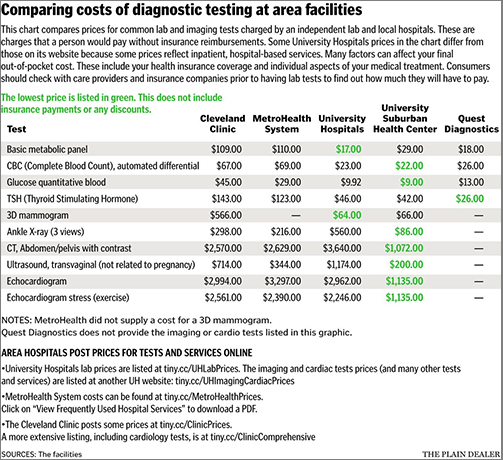Former FDA Director to Speak at Executive War College on FDA’s Coming Regulation of Laboratory Developed Tests
Tim Stenzel, MD, PhD, will discuss what clinical laboratories need to know about the draft LDT rule, FDA memo on assay reclassification, and ISO-13485 harmonization
Many clinical laboratories anxiously await a final rule from the US Food and Drug Administration (FDA) that is expected to establish federal policies under which the agency will regulate laboratory developed tests (LDTs). The agency released a proposed rule on Oct. 3, 2023, setting a Dec. 4 deadline for submission of comments. The White House’s Office of Management and Budget received a draft of the final rule less than three months later on March 1, 2024.
“Given how fast it moved through HHS, the final [rule] is likely pretty close” to the draft version, wrote former FDA commissioner Scott Gottlieb, MD, in a post on LinkedIn. Gottlieb and other regulatory experts expect the White House to submit the final rule to Congress no later than May 22, and perhaps as soon as this month.
But what will the final rule look like? Tim Stenzel, MD, PhD, former director of the FDA’s Office of In Vitro Diagnostics, suggests that it is too soon to tell.
Stenzel, who retired from the FDA last year, emphasized that he was not speaking on behalf of the federal agency and that he adheres to all FDA confidentiality requirements. He formed a new company—Grey Haven LLC—through which he is accepting speaking engagements in what he describes as a public service.

“I’m taking a wait and see approach,” said Tim Stenzel, MD, PhD (above), former director of the FDA’s Office of In Vitro Diagnostics, in an interview with Dark Daily. “The rule is not finalized. The FDA received thousands of comments. It’s my impression that the FDA takes those comments seriously. Until the rule is published, we don’t know what it will say, so I don’t think it does any good to make assumptions.” Clinical laboratory leaders will have an opportunity to learn how to prepare for FDA regulation of LDTs directly from Stenzel at the upcoming Executive War College in May. (Photo copyright: LinkedIn.)
FDA’s History of LDT Regulation
Prior to his five-year stint at the agency, Stenzel held high-level positions at diagnostics manufacturers Invivoscribe, Quidel Corporation, Asuragen, and Abbott Laboratories. He also directed the clinical molecular diagnostics laboratory at Duke University Medical Center in North Carolina. In the latter role, during the late 1990s, he oversaw development of numerous LDTs, he said.
The FDA, he observed, has long taken the position that it has authority to regulate LDTs. However, since the 1970s, after Congress passed the Medical Device Amendments to the federal Food, Drug, and Cosmetic Act, the agency has generally exercised “enforcement discretion,” he said, in which it declined to regulate most of these tests.
At the time, “many LDTs were lower risk, small volume, and used for specialized needs of a local patient population,” the agency stated in a press release announcing the proposed rule. “Since then, due to changes in business practices and increasing ability to ship patient specimens across the country quickly, many LDTs are now used more widely, for a larger and more diverse population, with large laboratories accepting specimens from across the country.”
Clinical Labs Need a Plan for Submission of LDTs to FDA
The FDA proposed the new rule after Congress failed to vote on the VALID Act (Verifying Accurate Leading-edge IVCT Development Act of 2021), which would have established a statutory framework for FDA oversight of LDTs. Citing public comments from FDA officials, Stenzel believes the agency would have preferred the legislative approach. But when that failed, “they thought they needed to act, which left them with the rulemaking path,” he said.
The new rule, as proposed, would phase out enforcement discretion in five stages over four years, he noted. Labs would have to begin submitting high-risk tests for premarket review about three-and-a-half years from publication of the final rule, but not before Oct. 1, 2027. Premarket review requirements for moderate- or low-risk tests would follow about six months later.
While he suggested a “wait and see” approach to the final rule, he advises labs that might be affected to develop a plan for dealing with it.
Potential Lawsuits
Stenzel also noted the likelihood of litigation in which labs or other stakeholders will seek to block implementation of the rule. “It’s a fairly widespread belief that there will be a lawsuit or lawsuits that will take this issue through the courts,” he said. “That could take several years. There is no guarantee that the courts will ultimately side with the FDA.”
In “Perfect Storm of Clinical Lab and Pathology Practice Regulatory Changes to Be Featured in Discussions at 29th Annual Executive War College,” Dark Daily covers how the forces in play will directly impact the operations and financial stability of many of the nation’s clinical laboratories.
Stenzel is scheduled to speak about the LDT rule during three sessions at the upcoming Executive War College on Diagnostic, Clinical Laboratory, and Pathology Management conference taking place on April 30-May 1 in New Orleans.
He acknowledged that it is a controversial issue among clinical laboratories. Many labs have voiced opposition to the rule as well as the Valid Act.
Currently in retirement, Stenzel says he is making himself available as a resource through public speaking for laboratory professionals and other test developers who are seeking insights about the agency.
“The potential value that I bring is recent experience with the FDA and with stakeholders both inside and outside the FDA,” he said, adding that during his presentations he likes “to leave plenty of time for open-ended questions.”
In the case of his talks at the Executive War College, Stenzel said he anticipates “a robust conversation.”
He also expects to address other FDA-related issues, including:
- A recent memo in which the agency said it would begin reclassifying most high-risk In Vitro Diagnostic (IVD) tests—those in class III (high risk)—into class II (moderate to high risk).
- The emergence of multi-cancer detection (MCD) tests, which he described as a “hot topic in the LDT world.” The FDA has not yet approved any MCD tests, but some are available as LDTs.
- A new voluntary pilot program in which the FDA will evaluate LDTs in situations where the agency has approved a treatment but has not authorized a corresponding companion diagnostic.
- An FDA effort to harmonize ISO 13485—a set of international standards governing development of medical devices and diagnostics—with the agency’s own quality system regulations. Compliance with the ISO standards is necessary to market products in many countries outside the US, particularly in Europe, Stenzel noted. Harmonization will simplify product development, he said, because manufacturers won’t have to follow two or more sets of rules.
To learn how to prepare for the FDA’s future regulation of LDTs, clinical laboratory and pathology group managers would be wise to attend Stenzel’s presentations at this year’s Executive War College. Visit here to learn more and to secure your seat in New Orleans.
—Stephen Beale
Related Information:
FDA Proposes Rule Aimed at Helping to Ensure Safety and Effectiveness of Laboratory Developed Tests
Proposed Rule Webinar: Medical Devices; Laboratory Developed Tests (webinar transcript)
Proposed Rule Webinar: Medical Devices; Laboratory Developed Tests (slides)
FDA Proposed Rule on Medical Devices; Laboratory Developed Tests
CDRH Announces Intent to Initiate the Reclassification Process for Most High Risk IVDs
Questions and Answers about Multi-Cancer Detection Tests Oncology Drug Products Used with Certain In Vitro Diagnostics Pilot Program





